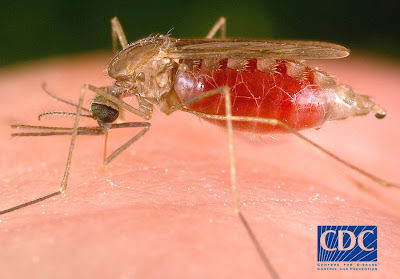bobgnote
Rookie
- Nov 24, 2008
- 1,258
- 38
- 0
- Banned
- #1
The following information may not have gotten through, to the CIA, at their website, since I kept getting an error message:
Hello, I am a US citizen, who has read: CIA Opens Center on Climate Change and National Security
September 25, 2009
https://www.cia.gov/news-informatio...-on-climate-change-and-national-security.html
I have also read, how the Company has to keep this quiet:
CIA Keeps Its Climate Work Under Wraps | Mother Jones
The CIA's Weather Underground | Mother Jones
So I wasn't able to find any reference, to this center, when I ran a search, at the CIA website, for any information, about climate change. Of course, I would normally visit NASA or AGU or NOAA or some magazine, like Nature or Physics Magazine, since I like to read serious studies and reports.
But for practical purposes, I feel compelled to use this form, to contact the agency, since climate change is obviously underway, past all tipping points, in the way, of runaway global warming. We may find ourselves in the difficult position, of whistleblower.
If we are to be whistleblowers, I recommend a loud burst, of this activity, to immediately direct strategic media. Losing is not an option.
Our recent solar cycles have been mild, including the current cycle 24, a lot of perennial cap and glacial ice has melted, and so global temperatures should be subject, to some sort of stabilizing counter-forcing. But temperatures have risen.
We are seeing more high temperature records, than low temperature records, and this trend will tend, toward 20-1, by 2050, and this may reach 50-1, by 2100. El Nino events will tend to overbalance La Nina events, progressively.
Natural disasters are up. This must continue. One big El Nino event, and the Sacramento area will flood. One earthquake, and it won't even take a really big event, to get the middle of California all wet.
The East Coast and Gulf areas are probably a write-off. It will take about a 1.6 C rise, to finish Greenland's ice, and we will likely see that surpassed, without solar intensity getting worse, but the intensity will certainly increase, while CH4 and more CO2 out-gas, from warming lands and waters, particularly in the Arctic. Then SLR will surely take the Atlantic coast and more.
Ordinarily, the Pleistocene-Holocene maximum for CO2 is 280 ppm, whereupon CO2 would slowly decrease, and temperatures would jump around, but decline, over 80-100K years, until CO2 reaches 180 ppm, and then CO2 and temperatures would shoot up, to the usual maximum area, which is where we are, today.
But somebody started burning a lot of wood, coal, and oil, while riding around in cars, to work in factories, or to cut forests, with chainsaws. Some of these people won't own up, to what happened, when people simultaneously increased emissions, with several different pollutants, while injuring CO2 respiration.
These people are severally seditious, and I think the CIA needs to notice their active tendency, to issue propaganda, which is similar, to flat-earth theory, but which is called "skepticism," and maybe some call their appetite for false media, 'conservatism.'
As a result, none of the 450,000 elected officials, in the USA is effectively planning, to engage CO2-neutral biomass OR to radically re-green, despite the urgency of need, for our security, against accelerating climate degeneration. We haven't even caught up to Henry Ford's hemp ethanol and plastic, evident since the Model T, or to his indestructible plastic, 1941, see YouTube.
We don't get to have calcified hemp hurds, to make termite-resistant houses and other structures. We also need switchgrass and algae, with ultrasound processing, to make ethanol. But we don't have a lot of this, or genetically engineered plants, to re-green deserts and polluted areas, which must be reclaimed, lest existing human habitats fail.
When the northern ice albedo (reflectivity) fails, northern summers will add a lot of warmth, while East Antarctic ice will eventually start sliding, into the warming oceans. SLR is already accelerating, so any increase in storm severity can wreck a lot of the US. Tornado alley now goes, from California, to Poland, no joke.
But when the heavier seas engage in such tidal lunacy, as precedes seismic and volcanic events, the volcano on the island of La Palma will erupt, one more time, which may be the eruption, which calves up to 1/3 of the island, into the Atlantic, which will swamp D.C. and most of the East Coast. How much will we get back, after that happens?
The oceans are acidifying, from absorbing too much CO2, which will upset the food chain, but when the oceans enlarge and warm, jellyfish will take over, as top predator, but any fish we eat will likely come from farms. When the oceans warm up, a lot, SLR will move, toward the 70 m level, which will be catastrophic, to any people, left alive.
Storms will be more numerous and powerful. But when that SLR squeezes off big volcanoes, we will enter into a phase, of severe disruption, of all human media. When Long Valley blows, the SW will be a mess.
But when Yellowstone blows, the US breadbasket will get taken out. I believe the reason the Russians once had a 50-megaton Tsar-bomba is they intended to cut into the Yellowstone magma chamber, with tactical nukes, and then they could detonate the big bomb, in the plume, right over the magma chamber, so any lahars or ash-fall would be deadly and pernicious.
Of course, some fallout would reach Europe and Asia, but the US would be destroyed, without even resorting to a lot of accurate targeting, by other ICBMs, if somebody targeted Yogi Bear, first. Good thing the Russians dismantled that Tsar-bomba.
To the point: I believe the anti-AGW skeptics are seditious, by degree. I don't see why they have gathered so much media, including opposition, to CIA funding, which has apparently forced the company to necessary silence, about the vital Center on Climate Change and N.S. That somebody got through the evil rip-offs and zombies, in the US, to make such a vital center is impressive, but this will continue to suffer funding difficulty, with the NOAA and any other vital agency, since funding is mis-allocated, by seditious profiteers.
If we stop all human emissions and start re-greening, now, SLR would still go up several feet. We need to be secure, here.
So I have some recommendations, and if you would like to reply, please engage my e-mail.
1. We have to remove people, from public media, who won't admit to climate change threats, especially if they pretend no global warming or human activity is related. These people are obtuse, in their denial, of circumstances and science, and they are now actively obnoxious and seditious, in a way, which is a lot more threatening, to national security, than any nut-job Marxists ever were:
a. don't underestimate nut-job Marxists, since the former Soviet Union was and Russia is an oil exporter, so advocates of Russian media do not actively oppose the US drug war, which prevents hemp, from its rightful place, in the US energy market;
2. We need to lose the war on drugs, ASAP. The inclusion of marijuana as a Schedule I drug was designed, to protect the petroleum and coal industries, from competition, while an enormously corrupt prison industry developed, so the US funds directly 25% of the world's detainees, while funding the drug war AND its carbon footprint, around the world, using the primary resources, of only 5%, of the world's population (US residents), in the course of corrupting all media agendas, so carbon emissions are severally multiplied, while funding for vital services is impaired (got funding troubles, hey now, we don't need anymore Op.FF fiascos, during a drug war);
3. We have to disassociate from seditious religions and their support for Israel, ASAP. Christians started easing into support, for the invasion of Palestine, as of the industrial revolution, and the 1882 invasion of Palestine, by Zionist settlers was the likely cause, of the Mahdi Rebellion, in Egypt, 1886. This trend will not desist. Israel is a nuisance, related to organized criminal media, generally, and to support Zionism and to guarantee Israel's defense and oil supply is a world-class nuisance, which continues to lead US failures, in the Middle East:
a. The US supports Sunnis, including as minority tyrants, such as Saddam in Iraq and the King of Bahrain, over Shiite majorities
b. I believe the CIA has in the past supported UBL, Saddam, and the Shah, which has failed, given US support for Israel and for corporate development, of national oil supplies
c. Some sort of failure will result, from US refusal, to recognize incompatible policies, which are all contributing, to consumption of sequestered carbon, while manipulating fossil fuel and other markets, which the US cannot control, since US oil production peaked, in 1970;
We must minimize our carbon footprint, re-green deserts and polluted areas, or we will lose human habitat, at a rate, which will force our ocean organisms into general extinction, but our human population and our culture will fail, in such a way, which will challenge US security, to its very limits, sooner, rather than later.
Extinctions are already 100x normal, but some estimates predict we will officially enter Mass Extinction Event 6, by 2022. If we fail to re-green, in an aggressive way, we can challenge the Permian-Triassic Extinction, 251-253 m.y.a., for the leading extinction event, of all time, but that event was enhanced, by some sort of strike, by a carbonaceous meteorite. Of course, never underestimate the ability of humans, to devise nuclear weapons and bad nuclear power plants, with bad cores and cooling systems!
We are out-gassing CO2, at about 10x the rate, preceding the PETM extinction, 56 m.y.a., and since we are out-gassing CH4, from Arctic areas, we have all the GHG preconditions met, to engage a high death toll, in the course, of a mass extinction event.
Of course, if humans keep on arguing, over practically everything, and corruption continues to rule, so cartels and gangs and their courts and lawyers are everywhere and anywhere, we are not likely, to minimize our carbon footprint, are we. So corruption and its carbon footprint has to go, while we need to get CO2-neutral biomass, going, already, and we need to re-green deserts and polluted areas. Any other course will lead to catastrophic failure, of human and animal habitat.
We need to grow hemp, in fertilizer-salted fields, and we need to grow switchgrass, on semi-arable lands. We can grow algae, by some kind of high-tech method. We need to put mangroves, in some places, and we need plants, unknown, to replace forests, damaged by alternating droughts and deluges, which made them susceptible, to beetle infestations and wild-fires.
Your thoughts, please! I hope you developed a sense of urgency, similar to mine, or national security is jeopardized.
Apparently, Sean Hannity and Ann Coulter and a host of other media 'conservatives' aren't being helpful. But I know one guy, who is a registered Republican, who leads, at finding scientific media, in my little group of AGW students. Another guy is probably a Democrat, while I tend to be a Green. Too bad all the Democrats in office come up with is cap-and-trade, since that leads to gridlock and boondoggle, with Republicans, who revel in devising media agendas, for the corrupt Democrats to imitate.
Gridlock and boondoggle is what the Democrats and Republicans thrive on. Help discourage this seditious, wasteful, big carbon-footprint behavior, since the warming and climate change tipping points are eluding our current media, of control. Human survival and US security will take a more aggressive approach, than having many geeks gather, to argue, over cap-and-trade or whether the heat waves, during mild solar cycles and record ice melts are indicative, of climate change. Hey! Climate is changing.
The US can fail, by large degrees, so let's go.
Hello, I am a US citizen, who has read: CIA Opens Center on Climate Change and National Security
September 25, 2009
https://www.cia.gov/news-informatio...-on-climate-change-and-national-security.html
I have also read, how the Company has to keep this quiet:
CIA Keeps Its Climate Work Under Wraps | Mother Jones
The CIA's Weather Underground | Mother Jones
So I wasn't able to find any reference, to this center, when I ran a search, at the CIA website, for any information, about climate change. Of course, I would normally visit NASA or AGU or NOAA or some magazine, like Nature or Physics Magazine, since I like to read serious studies and reports.
But for practical purposes, I feel compelled to use this form, to contact the agency, since climate change is obviously underway, past all tipping points, in the way, of runaway global warming. We may find ourselves in the difficult position, of whistleblower.
If we are to be whistleblowers, I recommend a loud burst, of this activity, to immediately direct strategic media. Losing is not an option.
Our recent solar cycles have been mild, including the current cycle 24, a lot of perennial cap and glacial ice has melted, and so global temperatures should be subject, to some sort of stabilizing counter-forcing. But temperatures have risen.
We are seeing more high temperature records, than low temperature records, and this trend will tend, toward 20-1, by 2050, and this may reach 50-1, by 2100. El Nino events will tend to overbalance La Nina events, progressively.
Natural disasters are up. This must continue. One big El Nino event, and the Sacramento area will flood. One earthquake, and it won't even take a really big event, to get the middle of California all wet.
The East Coast and Gulf areas are probably a write-off. It will take about a 1.6 C rise, to finish Greenland's ice, and we will likely see that surpassed, without solar intensity getting worse, but the intensity will certainly increase, while CH4 and more CO2 out-gas, from warming lands and waters, particularly in the Arctic. Then SLR will surely take the Atlantic coast and more.
Ordinarily, the Pleistocene-Holocene maximum for CO2 is 280 ppm, whereupon CO2 would slowly decrease, and temperatures would jump around, but decline, over 80-100K years, until CO2 reaches 180 ppm, and then CO2 and temperatures would shoot up, to the usual maximum area, which is where we are, today.
But somebody started burning a lot of wood, coal, and oil, while riding around in cars, to work in factories, or to cut forests, with chainsaws. Some of these people won't own up, to what happened, when people simultaneously increased emissions, with several different pollutants, while injuring CO2 respiration.
These people are severally seditious, and I think the CIA needs to notice their active tendency, to issue propaganda, which is similar, to flat-earth theory, but which is called "skepticism," and maybe some call their appetite for false media, 'conservatism.'
As a result, none of the 450,000 elected officials, in the USA is effectively planning, to engage CO2-neutral biomass OR to radically re-green, despite the urgency of need, for our security, against accelerating climate degeneration. We haven't even caught up to Henry Ford's hemp ethanol and plastic, evident since the Model T, or to his indestructible plastic, 1941, see YouTube.
We don't get to have calcified hemp hurds, to make termite-resistant houses and other structures. We also need switchgrass and algae, with ultrasound processing, to make ethanol. But we don't have a lot of this, or genetically engineered plants, to re-green deserts and polluted areas, which must be reclaimed, lest existing human habitats fail.
When the northern ice albedo (reflectivity) fails, northern summers will add a lot of warmth, while East Antarctic ice will eventually start sliding, into the warming oceans. SLR is already accelerating, so any increase in storm severity can wreck a lot of the US. Tornado alley now goes, from California, to Poland, no joke.
But when the heavier seas engage in such tidal lunacy, as precedes seismic and volcanic events, the volcano on the island of La Palma will erupt, one more time, which may be the eruption, which calves up to 1/3 of the island, into the Atlantic, which will swamp D.C. and most of the East Coast. How much will we get back, after that happens?
The oceans are acidifying, from absorbing too much CO2, which will upset the food chain, but when the oceans enlarge and warm, jellyfish will take over, as top predator, but any fish we eat will likely come from farms. When the oceans warm up, a lot, SLR will move, toward the 70 m level, which will be catastrophic, to any people, left alive.
Storms will be more numerous and powerful. But when that SLR squeezes off big volcanoes, we will enter into a phase, of severe disruption, of all human media. When Long Valley blows, the SW will be a mess.
But when Yellowstone blows, the US breadbasket will get taken out. I believe the reason the Russians once had a 50-megaton Tsar-bomba is they intended to cut into the Yellowstone magma chamber, with tactical nukes, and then they could detonate the big bomb, in the plume, right over the magma chamber, so any lahars or ash-fall would be deadly and pernicious.
Of course, some fallout would reach Europe and Asia, but the US would be destroyed, without even resorting to a lot of accurate targeting, by other ICBMs, if somebody targeted Yogi Bear, first. Good thing the Russians dismantled that Tsar-bomba.
To the point: I believe the anti-AGW skeptics are seditious, by degree. I don't see why they have gathered so much media, including opposition, to CIA funding, which has apparently forced the company to necessary silence, about the vital Center on Climate Change and N.S. That somebody got through the evil rip-offs and zombies, in the US, to make such a vital center is impressive, but this will continue to suffer funding difficulty, with the NOAA and any other vital agency, since funding is mis-allocated, by seditious profiteers.
If we stop all human emissions and start re-greening, now, SLR would still go up several feet. We need to be secure, here.
So I have some recommendations, and if you would like to reply, please engage my e-mail.
1. We have to remove people, from public media, who won't admit to climate change threats, especially if they pretend no global warming or human activity is related. These people are obtuse, in their denial, of circumstances and science, and they are now actively obnoxious and seditious, in a way, which is a lot more threatening, to national security, than any nut-job Marxists ever were:
a. don't underestimate nut-job Marxists, since the former Soviet Union was and Russia is an oil exporter, so advocates of Russian media do not actively oppose the US drug war, which prevents hemp, from its rightful place, in the US energy market;
2. We need to lose the war on drugs, ASAP. The inclusion of marijuana as a Schedule I drug was designed, to protect the petroleum and coal industries, from competition, while an enormously corrupt prison industry developed, so the US funds directly 25% of the world's detainees, while funding the drug war AND its carbon footprint, around the world, using the primary resources, of only 5%, of the world's population (US residents), in the course of corrupting all media agendas, so carbon emissions are severally multiplied, while funding for vital services is impaired (got funding troubles, hey now, we don't need anymore Op.FF fiascos, during a drug war);
3. We have to disassociate from seditious religions and their support for Israel, ASAP. Christians started easing into support, for the invasion of Palestine, as of the industrial revolution, and the 1882 invasion of Palestine, by Zionist settlers was the likely cause, of the Mahdi Rebellion, in Egypt, 1886. This trend will not desist. Israel is a nuisance, related to organized criminal media, generally, and to support Zionism and to guarantee Israel's defense and oil supply is a world-class nuisance, which continues to lead US failures, in the Middle East:
a. The US supports Sunnis, including as minority tyrants, such as Saddam in Iraq and the King of Bahrain, over Shiite majorities
b. I believe the CIA has in the past supported UBL, Saddam, and the Shah, which has failed, given US support for Israel and for corporate development, of national oil supplies
c. Some sort of failure will result, from US refusal, to recognize incompatible policies, which are all contributing, to consumption of sequestered carbon, while manipulating fossil fuel and other markets, which the US cannot control, since US oil production peaked, in 1970;
We must minimize our carbon footprint, re-green deserts and polluted areas, or we will lose human habitat, at a rate, which will force our ocean organisms into general extinction, but our human population and our culture will fail, in such a way, which will challenge US security, to its very limits, sooner, rather than later.
Extinctions are already 100x normal, but some estimates predict we will officially enter Mass Extinction Event 6, by 2022. If we fail to re-green, in an aggressive way, we can challenge the Permian-Triassic Extinction, 251-253 m.y.a., for the leading extinction event, of all time, but that event was enhanced, by some sort of strike, by a carbonaceous meteorite. Of course, never underestimate the ability of humans, to devise nuclear weapons and bad nuclear power plants, with bad cores and cooling systems!
We are out-gassing CO2, at about 10x the rate, preceding the PETM extinction, 56 m.y.a., and since we are out-gassing CH4, from Arctic areas, we have all the GHG preconditions met, to engage a high death toll, in the course, of a mass extinction event.
Of course, if humans keep on arguing, over practically everything, and corruption continues to rule, so cartels and gangs and their courts and lawyers are everywhere and anywhere, we are not likely, to minimize our carbon footprint, are we. So corruption and its carbon footprint has to go, while we need to get CO2-neutral biomass, going, already, and we need to re-green deserts and polluted areas. Any other course will lead to catastrophic failure, of human and animal habitat.
We need to grow hemp, in fertilizer-salted fields, and we need to grow switchgrass, on semi-arable lands. We can grow algae, by some kind of high-tech method. We need to put mangroves, in some places, and we need plants, unknown, to replace forests, damaged by alternating droughts and deluges, which made them susceptible, to beetle infestations and wild-fires.
Your thoughts, please! I hope you developed a sense of urgency, similar to mine, or national security is jeopardized.
Apparently, Sean Hannity and Ann Coulter and a host of other media 'conservatives' aren't being helpful. But I know one guy, who is a registered Republican, who leads, at finding scientific media, in my little group of AGW students. Another guy is probably a Democrat, while I tend to be a Green. Too bad all the Democrats in office come up with is cap-and-trade, since that leads to gridlock and boondoggle, with Republicans, who revel in devising media agendas, for the corrupt Democrats to imitate.
Gridlock and boondoggle is what the Democrats and Republicans thrive on. Help discourage this seditious, wasteful, big carbon-footprint behavior, since the warming and climate change tipping points are eluding our current media, of control. Human survival and US security will take a more aggressive approach, than having many geeks gather, to argue, over cap-and-trade or whether the heat waves, during mild solar cycles and record ice melts are indicative, of climate change. Hey! Climate is changing.
The US can fail, by large degrees, so let's go.



























